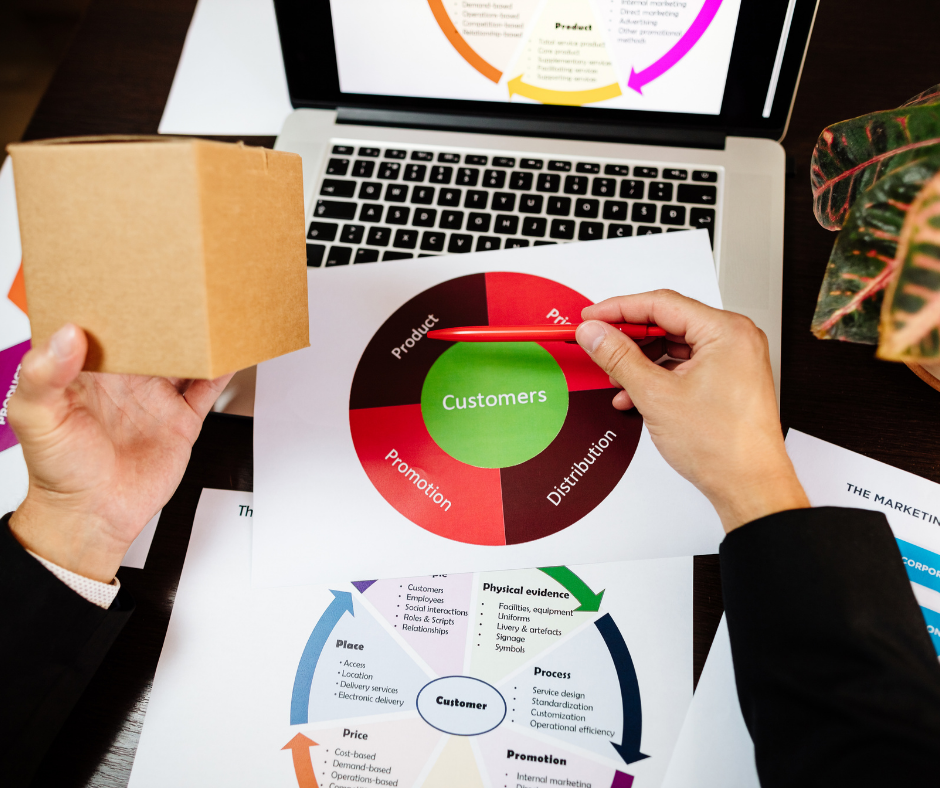Marketing Commodity Products and Undifferentiated Products

Yes, you can effectively market commodity products… if you know where to look
Do you remember in your early college marketing courses when you first learned about the four Ps? One of them was Product, which revolved around all the different attributes of your product, including unique selling points (USPs). Then you might move on to Promotion, to create a plan on how to promote your product, including the USP and differentials from other products in the marketplace. But what if there is nothing about your product that makes it different from other manufacturers? In other words, how do you market a commodity?
We’re familiar with commodities such as copper, crude oil, gold, etc., but markets and prices for those are generally set by supply and demand. However, as B2B marketers, occasionally we see a client introduce a product to fill out a product line or respond to a competitive threat with what’s known as a “commodity” product. That’s not in the sense of it being a raw material, but rather that it’s a “me-too” product, one with no real competitive advantage over what’s on the market. How do we promote that?
When it comes down to marketing a commodity product, now it’s time to look at the remaining Ps in marketing:
- Price
- Place (Channel)
- Promotion
Let’s discuss how you can use them to gain marketing traction with a commodity product.
The Best Price Wins in the Commodity Game
If you’re in the commodity game, it’s difficult to win when you’re more expensive than others on the market. The very definition of a commodity product is one that has no difference from others, so unless there’s another lever you’ll be able to use (we’ll touch on those levers below: brand name, faster delivery, implementation support, etc.), your price had better be in line with the market.
A corollary to price is warranty. Can you gain an advantage by offering better warranty terms than competitors?
The Place (Channel) in Which You Sell and How You Sell
Now we’re into the convenience factor. Can you provide your product in a way that’s easier for customers to find and purchase? Is it something to sell through alternative channels such as Amazon, or maybe sell through distribution instead of direct or reps? How about ecommerce on the website for simple, immediate ordering? Look for your distribution strategy as a way to provide a market advantage when there’s no Product advantage that will help move the product.
Delivery times, particularly with the supply chain issues facing most companies today, can become a particularly effective lever when marketing a commodity product. One sensor instrument manufacturer, for example, used its cash resources to create a year-long supply of products on the shelves that were ready for immediate delivery. It proved to be an excellent way to steal share on its commodity product, because, simply put, they had products to deliver while competitors didn’t.
Many marketers solve the commodity riddle by injecting a higher level of service. Certainly, faster delivery is a type of better service. But there’s more you can do. Talk about your stellar service and how you’re easy to do business with. (Business School Corollary 101: if you’re going to hang your hat on good service, just be sure you’re following through!)
Here are some service promises that can set you apart from companies manufacturing the same product.
1. The company that always responds quickly. No one wants to wait too long for an email response or a return call from voice mail. If you are a company that responds to customers quickly, make sure to advertise it. For example, put on your “contact us” form that your customer will get a response by the next business day.
2. Easy and friendly to do business with. Are your front-of-house people who answer the phone, supply the quotes, and respond to web queries friendly and helpful? Are they knowledgeable? Then let everyone know! Your sales process may be B2B, but you’re dealing with people. And, people work with the people they are comfortable with.
3. Be clear about logistics. Don’t be the company that promises quick delivery and then suddenly has to tell customers they are out of stock or delayed. Be clear with your customers about your supply chain and how orders are fulfilled. This will help customers with their own production operations and build trust. Also, if you offer premium delivery service, be sure to note it. This might be a differentiator from your competitors and an aspect that makes customers choose one supplier over another.
An idea: one client charged an “expediting service” for their products, which over time turned into a major profit center. It may not make sense for all companies, but it’s something to consider for critical product deliveries—particularly these days!
4. Quality control. Describe your quality control methods. Show pictures of the process or the machine. The more customers know about your quality control, the more confidence they’ll have in your product. This doesn’t need to mean that your quality control is better than competitors—but it’s a good proof point for showing why any product, even a commodity one, is worth purchasing from your company.
5. Make Your website easy to do business with. Once you get a prospect to your website, you need to be on your A-game with best engagement practices. Often, the easiest website wins! So here are just some of the ways to make sure you make the connection with a visitor and make your website easy to use.
a. Great user navigation. Have clear navigation to find product information, industries, how to order or request information, and any information about why visitors should do business with you. Think about adding selector guides or filters that can help them find the product they need quickly.
b. Accessories. Are there accessories that go with your commodity product? Make that easy for customers to find with related links on the site that ensure they buy any installation kits or other ancillary items needed for any purchase they’re making. Remember, you’re the easiest company to work with, so that’s just another way to ensure they get everything they need with one order.
c. Give your customers the forms they want. You can offer a detailed “request a quote” form with many required fields about the part they need, when, how many, and other pertinent information. Or you can have a lighter form where they can ask questions and just give their email address. Again, this is about being a company that’s easy to do business with.
d. Chat. If there’s someone to answer the phone, there’s someone to answer the chat. And increasingly, people want immediate answers via chat, even in a B2B environment. Some people just prefer chatting. Whichever way the customer wants to communicate, make it easy to do so.
A note: if you’re unsure about the services that make your company easy to do business with, you might want to conduct voice-of-the-customer interviews. This way, you can find out why customers are choosing your business and use their reasons in your messaging.
NOW, Let’s Have Some PROMOTION!
Now we can begin to discuss the Promotion “P"! Begin with this question: often we say to our clients, “don’t tell us what you do; tell us what you do better.” When answering that for a commodity product, we won’t have responses that apply to the product. So here are some levers you can use from the promotion side of the house to move that commodity product.
1. Advertise More. If you’re more visible than the other commodity products, you’ll have more times “at bat” and are more likely to gain share. Pump up your spending on Google; add “Google Shopping Feeds” to your paid search program if you’re offering e-commerce; buy ads on industry websites. Visibility is key to commodity marketing. Keep up on your social media. When you make social media posts, be sure to have a link back to your website. This will help your search rankings within Google.
2. Brand matters. Don’t discount the role of your brand name if you’ve got a strong one. This is where all that investment in your brand identity pays off. The company with the best brand name, the one that carries the most trust, often wins the commodity war. On the consumer side, we see this with many electronic devices. The electronics in a TV, for example, may be exactly the same in the well-known brand name vs. the off-brand knockoff; they may even be made in the same plant. But consumers will even pay more for the same product with the known brand name just because it gives them more assurance. It works the same in B2B.
3. One-stop convenience. Is your product something customers will bundle together with a variety of other items? Promote yourself as a one-stop destination to make it easier for customers to bundle that commodity item in with other products they typically buy from you.
4. Better videos and tutorial content. Even commodity products need explanation on where to use them, how to install them, and how to maintain them. Surround your product with great videos, manuals, blogs, and guides, and you’ll encourage your customer to make the easy choice to order your product rather than a competitor’s.
Videos are particularly important. You know that YouTube is the second biggest search engine. Use it to your advantage. How are your products made? How are they used? You can even have a theme to your videos that make them more engaging.
One client created videos in a star-adventure spoof format after what must remain an unnamed popular TV series. You can imagine how after watching one, you’d want to watch the next. It had nothing to do with the product advantages, but it was a great promotion device for creating the exposure they needed.
It’s Possible To Find That Advantage Even When Marketing Commodities
Those four Ps you learned about in college will never serve you better than when building a marketing plan for your commodity product. The goal is not to just be another RFQ in a purchasing agent’s email. You want to be the part or material that the engineers spec, that the quality control manager requests, and that customers prefer to work with. The strategy you use to present yourself will get you there.






